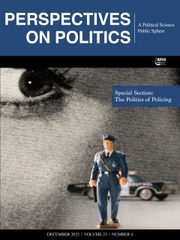After the 2024 election, a common critique of Pushback has been that the book misevaluated abortion. So I was encouraged that Kevin McMahon highlighted the “don’t fix the problem” dynamic. In short, after Dobbs, the Democratic Party moved quickly to pass legislation and introduce state referenda to protect abortion. In many states, liberals preemptively fixed the problem. Then Democrats lost at the polls, in part because they could not credibly claim that their election was the only solution to Dobbs. Compare this to how the Republican Party treated the issue from 1973 to 2022—nipping at the pro-life margins, but understanding that overturning Roe would be to kill the golden goose that delivered Catholic and evangelical voters.
This is a major, generalizable takeaway, and I am grateful to McMahon for pointing it out. It underscores how rarely a party can use a Supreme Court case to expand its coalition. A decision must be salient and unpopular/countermajoritarian to a cross-partisan base. Even then, it is not inevitable that a party will capitalize. They must signal voters “but not be too successful in reversing judicial policies” (p. 201). Democrats did not reverse Dobbs, of course. But in enough places, they provided enough access to abortion to ease voters’ fears. Once pro-choice policies and referenda passed, voters felt comfortable voting Republican. Similarly, Democrats may have done too much to address student debt relief (e.g., deferrals, rate reductions) after the Court struck it down. Strictly in terms of electoral strategy, the DNC would have been better off allowing debt to pile up, blaming the Republican-appointed Court and promising to work to eliminate again the $10,000 per borrower that the six conservative Justices reinstated.
McMahon’s big question is: are all unpopular decisions countermajoritarian? This is a fair question and perhaps stems from approach. Methodologically, I push regime politics to speak to a broader audience by clearly outlining what we should see if hypotheses hold. But focusing on countermajoritarian rulings might overlook decisions that are majoritarian, but unpopular to some. Consider Roe in the 21st century: supported by more than 50%, yet intensely opposed by an active pro-life minority, who nevertheless falsely claimed that Roe was countermajoritarian. “Sad though it sounds,” the book reads, “the truthfulness of these claims is less important than the sheer fact that they were made” (p. 191) because “sometimes the perception of the Court is more important than the reality” (p. 296, emphasis in original). Returning to McMahon’s question—must a case be countermajoritarian to be unpopular and electorally significant? My answer: No. But I focus on countermajoritarian cases because they push the boundaries of regime politics theory.
In doing so, Pushback seeks to engage a wider audience about the way in which the Court is part of, and bound by, the complexity of pluralism, policy, and politics. It is an effort to “bring the courts back in” to the study of American politics; and to do so with rigorous qualitative methods. For those seeking another book—one grounded in paradigmatic assumptions, sound approaches, observable measures, good data, and relevant cases—A Supreme Court Unlike Any Other is a worthy choice.

